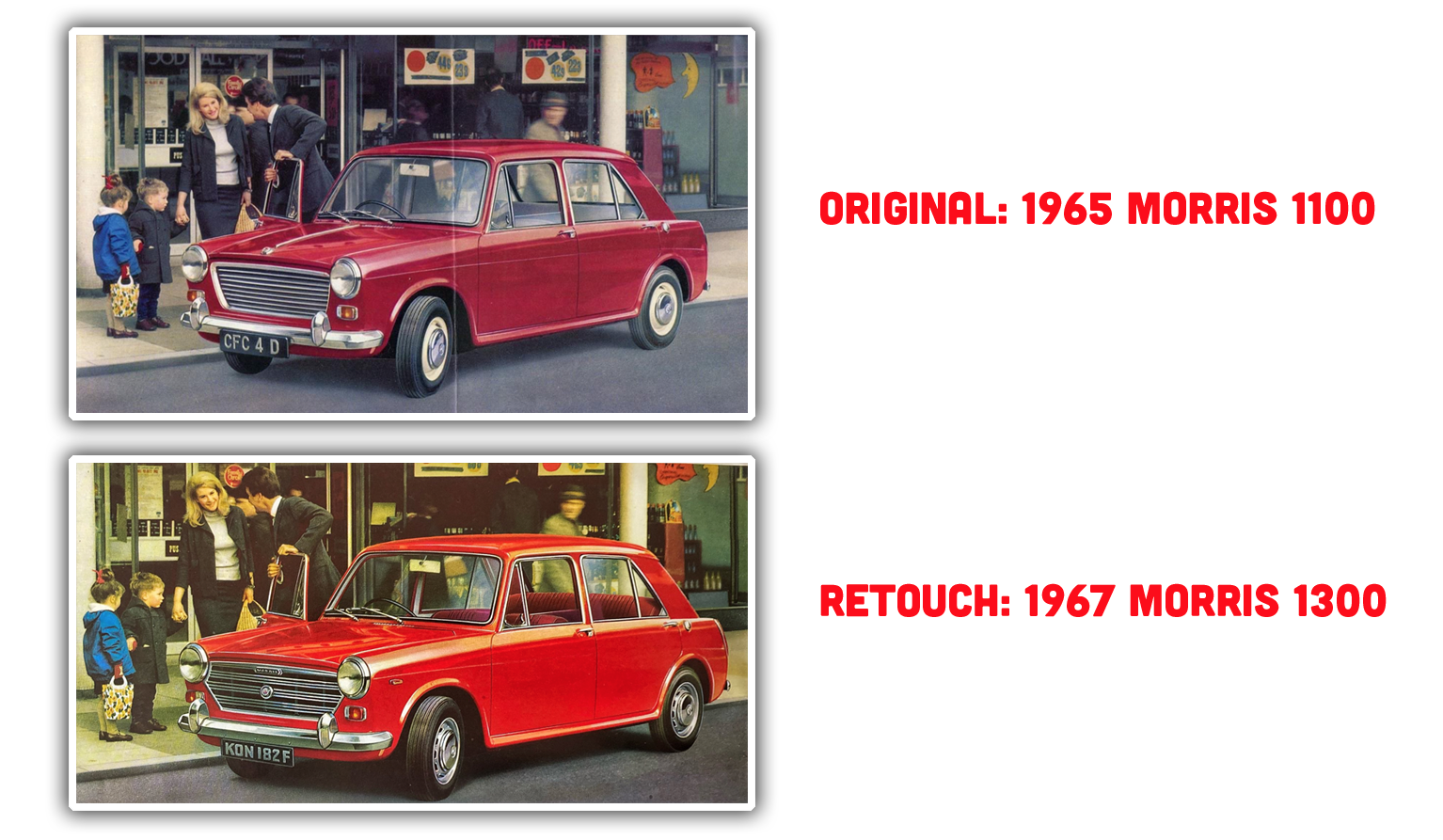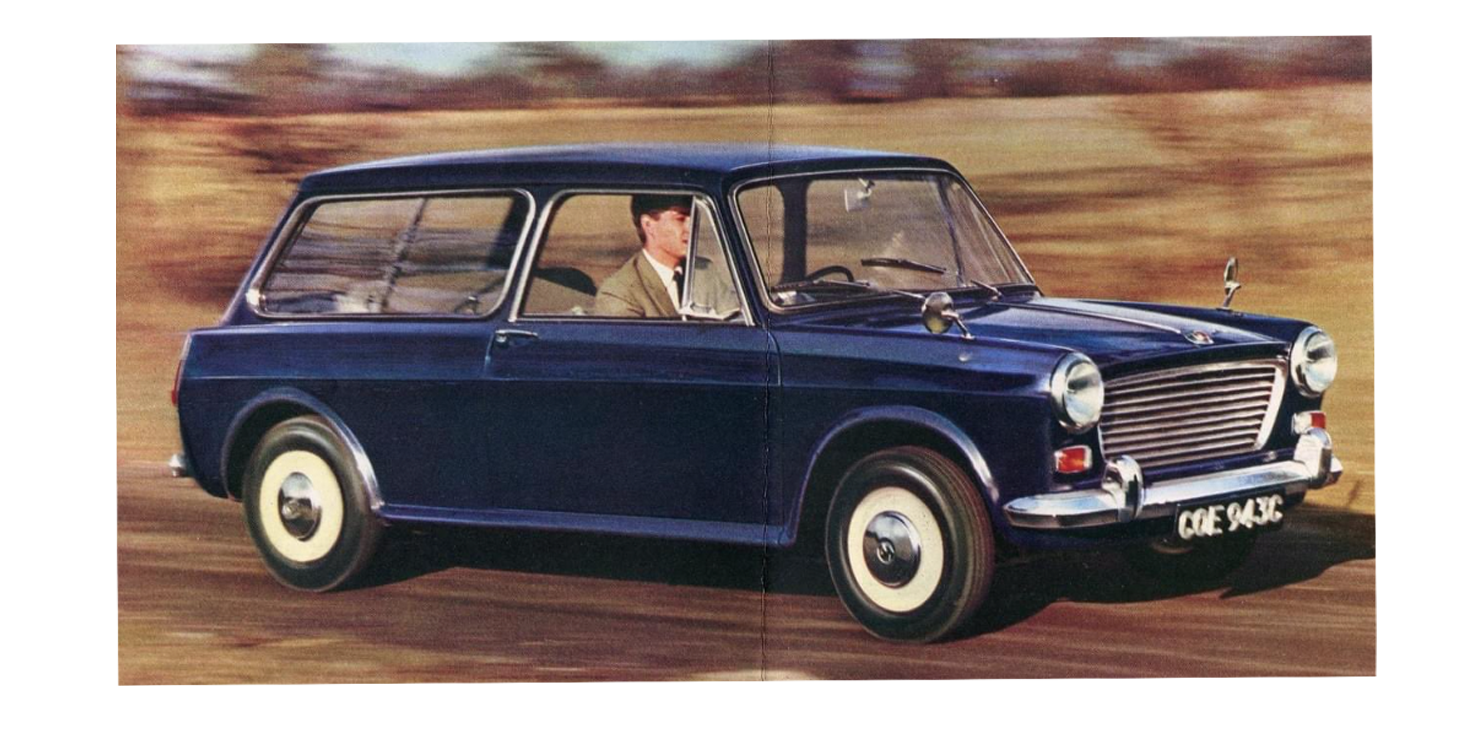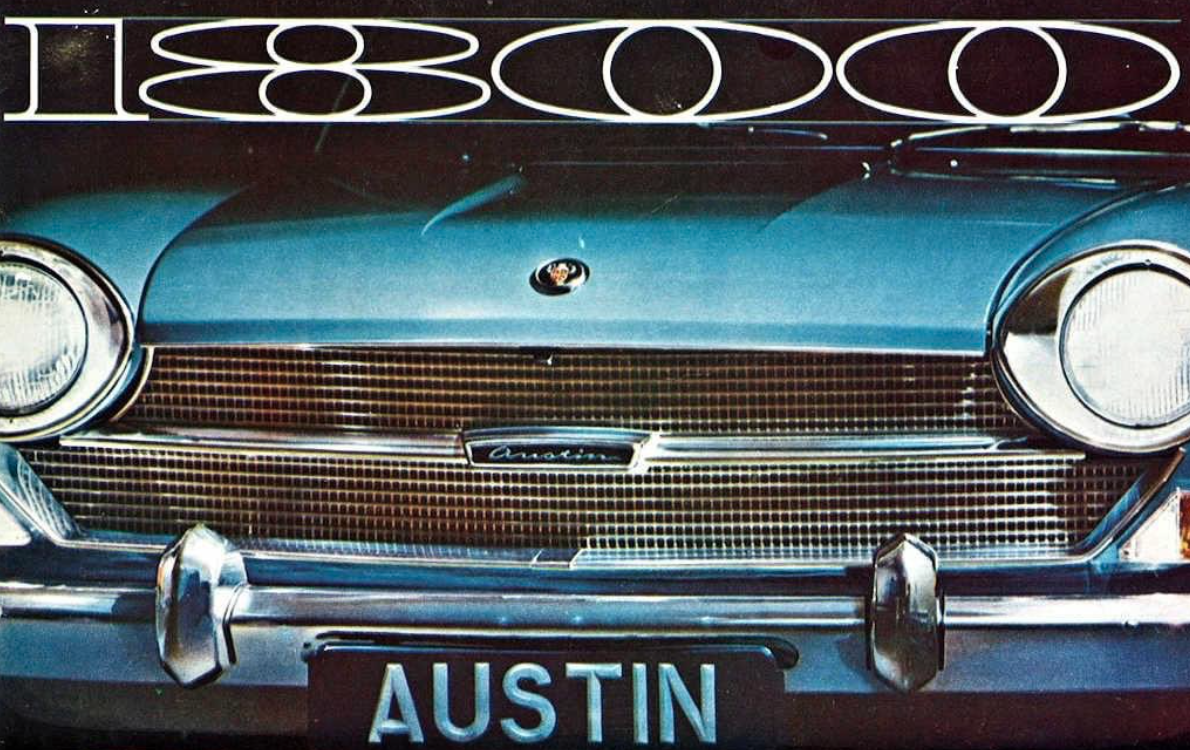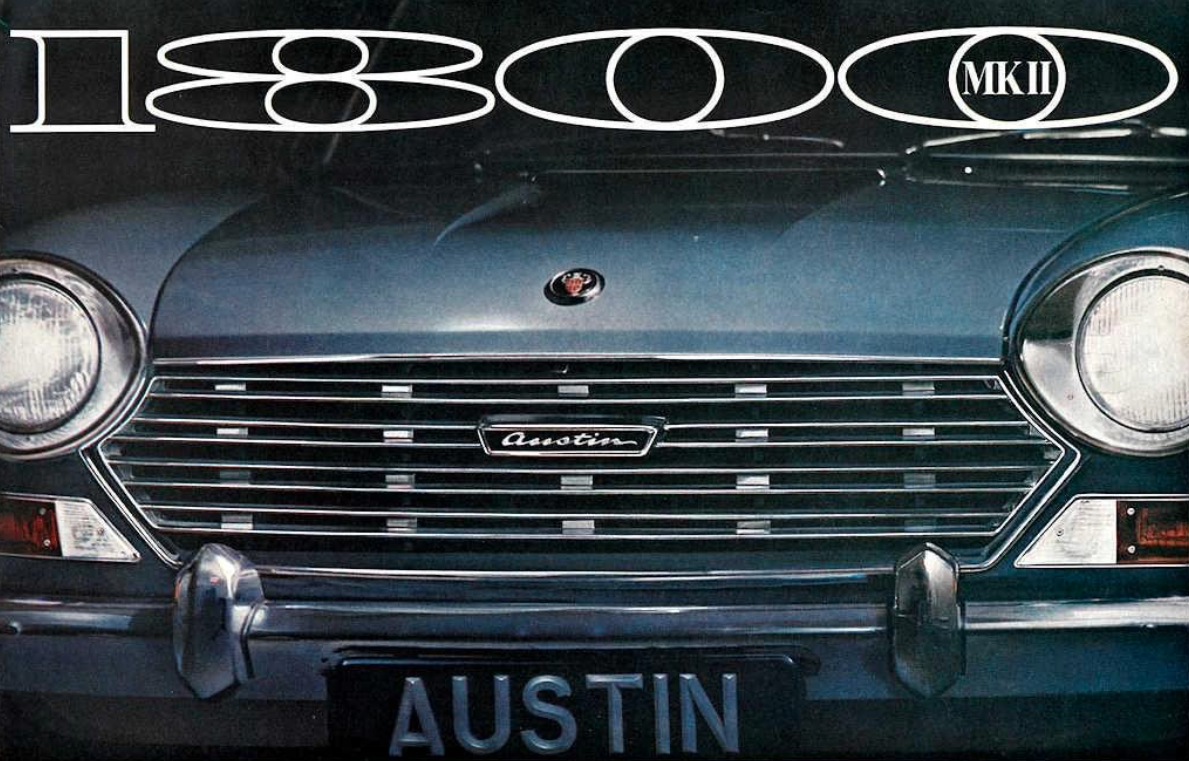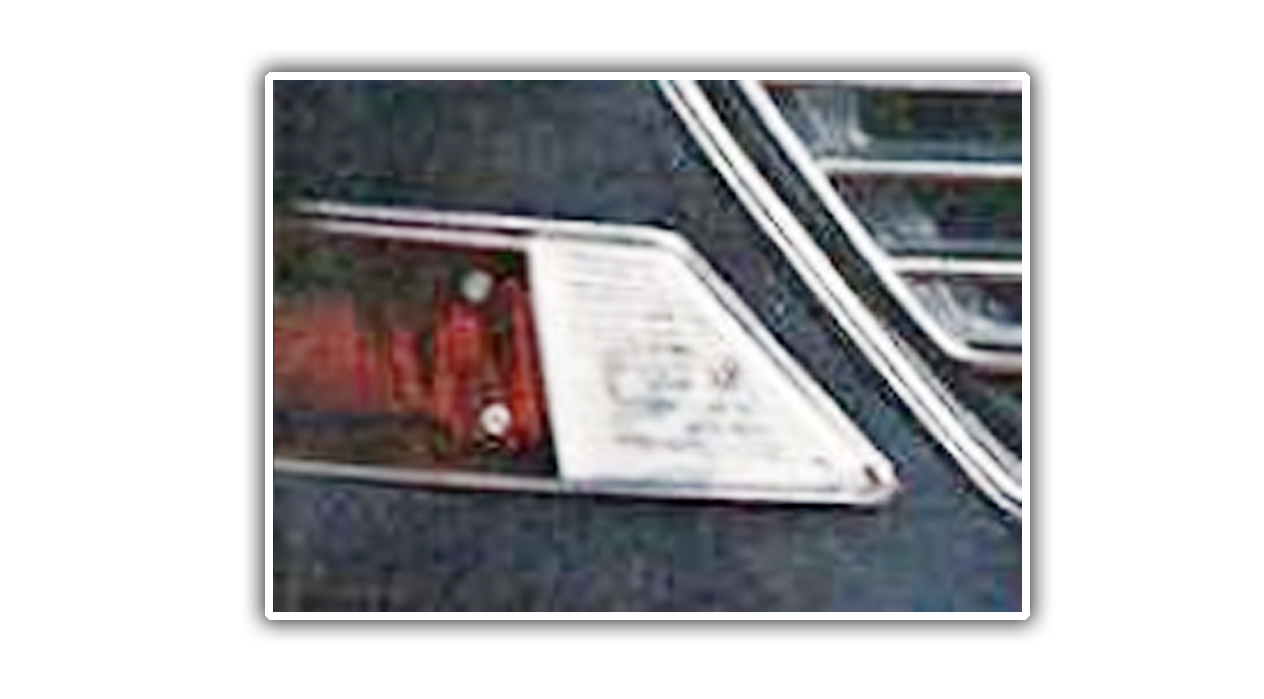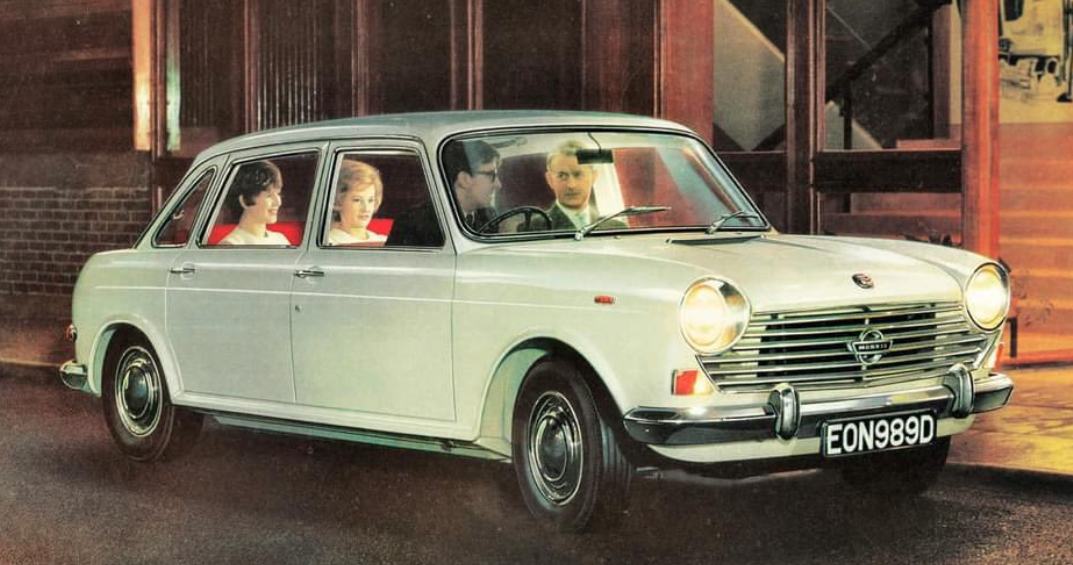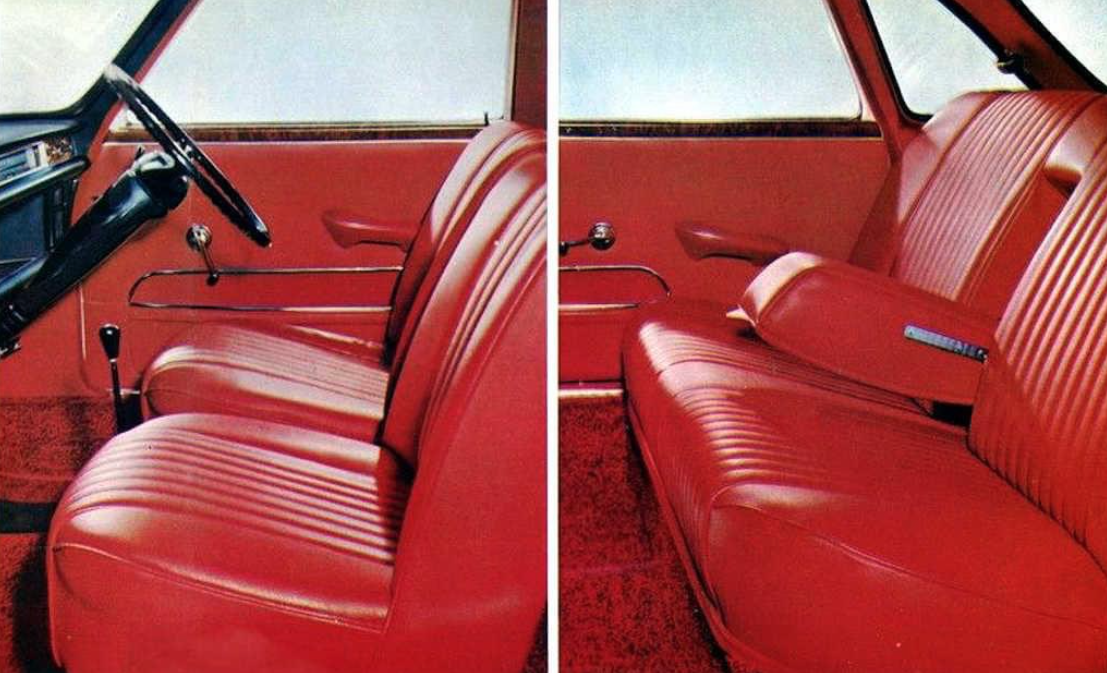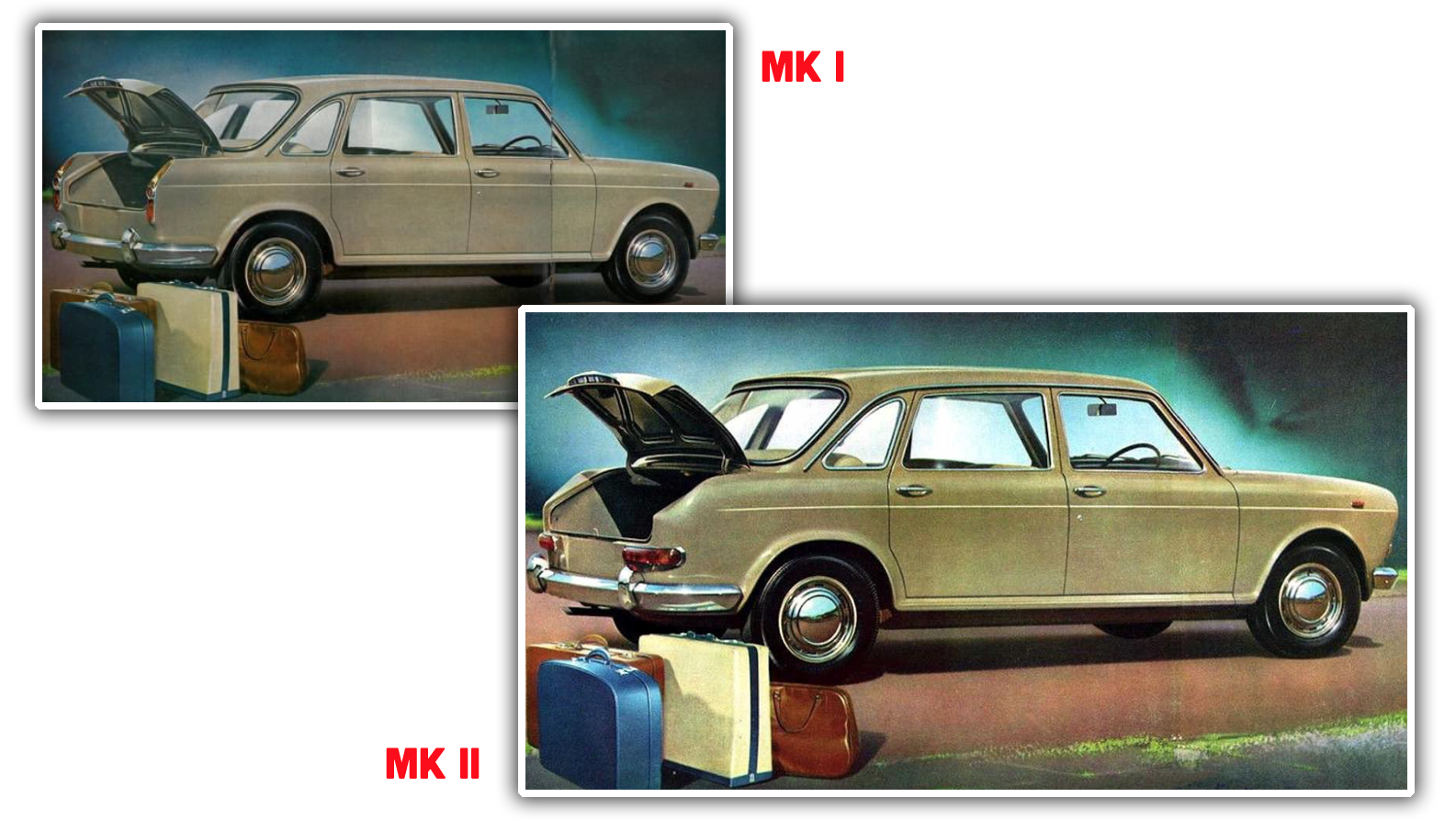I was turned on to these by Irish fan of British motoring history, Andrew, who runs The Car Factoids twitter feed and who provided me with these fascinating examples of cars that may be the best examples of this. Those cars include the BMC ADO16, known as the BMC 1100 and 1300, and the more upmarket BMC 1800 “Landcrab.” Almost every carmaker retouched brochure photos to some degree or another, that’s not what’s interesting here. What’s unusual is the degree to which BMC did it, re-working photos of one model of car into an updated model, something that seems to be very unusual for a major automaker. [Editor’s Note: I reached out to seasoned automotive photographer Mike Nykoruk (he’s shot a lot of images for the Big Three starting in the 1980s), who told me that what you see here was actually fairly common. “I shot a 1991/92 Chrysler Minivan, and they reused it every year until they changed the body style,” he told me. “They would just shoot the grille, strip it into the picture…They would pay me every year for usage of the photo.” The “reuse fee,” he told me was less than what it would cost an automaker to commission out a new set of photographs. “It can rack up really quickly to try to duplicate a picture that they love,” he told me. “Sometimes they don’t even pay the photographer again,” he said, though “In Detroit, with the big three, it was pretty much established that you couldn’t just do that.” How did this work, even? Well, when things went digital in the 1990s, it meant taking lots of photos of wheels, grilles, headlights, taillights or whatever the automaker wanted changed (Nykoruk said he used a “lazy susan” — basically a turntable), and then grafting those photos — taken at precisely the right angle — into the original picture. “When I shot the Buick LeSabre…they would reuse the photo, and they would bring the same car and just have me shoot the grille. And it was a grille-strip instead of the whole car,” he said. But back in the day, things were more complex. “In order for them to retouch, they would have to make a very high quality die sub-print, which itself would cost seven or eight hundred bucks, then an artist would paint the new thing on the actual print, and then they’d rephotograph it to make the actual picture. So it was a very complex process, but it was still cheaper to pay hte photographer, pay the artist, make the prints, re-do it then it was to go out and shoot a new picture,” Nykoruk told me. He later went into more detail, saying: These prints would be 16 by 20 or 20 by 24 — really big — and they’d reduce them down to eight by 10, and you couldn’t tell…they’d blow up the picture, they’d paint on there, and then when they reduced it down you couldn’t tell. It looked real. That’s the way it used to be. Let’s look at some examples, because, again, they’re amazing:
BMC was a master – or maybe abuser – of brand engineering, so the basic car you see here, was sold as an Austin, MG, Morris, Riley, Vanden Plas, and Wolseley. This clever transverse-engine, FWD machine was like a grown-up Mini and was Britian’s best selling car for much of the 1960s. And yet despite all that success, BMC still cheaped out by re-using a two-year-old photo of the Morris 1100 for the updated Morris 1300. Whoever retouched the photo did a fantastic job at it, extensively re-working the grille, wheels, license plate, adding marker lamps, and other little details. It seems ridiculous that all this work was considered easier than just doing a new photo shoot, but Andrew offered another likely possibility: BMC may not have had any new cars ready to actually shoot. Brochures were like the company’s website is today, but, being physically printed and distributed, took longer to be made available. So, if BMC wanted brochures ready when the cars were debuted, they weren’t always able to have cars to photograph early enough to get brochures printed, hence the skillful madness you see there. Here’s another fun example:
Again, 1965 BMC 1100. And now, the new model, two years and 200cc later:
Okay, sure, the smudged-out license plate is kind of lazy, but look at those new wheels, kicky new side stripe, and again marker lamps, new grille, hood, badging, and more. The BMC 1800 got similar extensive re-touchings as it went from Mk I to Mk II:
Here we see the Mk I, with its fine mesh grille. And next:
There’s so much I don’t understand about what’s going on here. I’m assured this is a re-touch of the first photo, and it very much seems to be (check out the matching reflection patterns in the headlamp bezels), but the extent of the re-touching is significant. The whole grille! The turn indicators! Were these elements just drawn in, or were there photographs taken and parts collaged together? If that was the case, why wasn’t a new photo just taken? Perhaps to preserve the overall layout and design?
Maybe I can sense some evidence of hand-painting on the indicator/sidelamp light here, but holy crap, is this skillful. We get a similarly extensive re-working on these brochures for the Mk I and Mk II Morris Monaco re-badged version:
That’s the Mk I, with the strangely glowing people inside, and here’s the facelifted Mk II: Again, extensive front end changes, some subtle rear end changes, and just to be sure everyone is fooled, the number plate now ends with an “F” instead of a “D.” The perfect crime. Interior shots got the same treatment:
That’s Mk I, and here’s MK II:
It’s very subtle: new armrests, window cranks, interior door handles, different door pockets. Little details. Bigger is this, though:
The whole rear end and taillight treatment changed and it still wasn’t enough to warrant a new photo.
I’m still unclear as to why BMC took this approach, so I reached out to Andrew, who had some interesting insights:
I could actually be on to something here. The leaps of engineering between Mark II to IV were in the mid-70’s to mid-80’s – perfect timing for the career move I suspect. And…HM used BMC engines, too.
http://oldcarbrochures.org/Canada/Chrysler-Canada/Plymouth/1981-Plymouth-Caravelle-Brochure/index.html http://oldcarbrochures.org/Canada/Chrysler-Canada/Dodge/1981-Dodge-Diplomat-Brochure/index.html
Also do one on the incredible small people used in old car ads: http://www.vw-model.dk/Gl.%20reklamer/reklame%20billeder/billeder/VW%201939%20Der%20KDF%20Wagen%20side%201.jpg
Or, maybe it’s just some weird British thing, like how outdoor scenes in their TV shows are shot on film, while indoor scenes are shot on video. Some law where car marketing materials have to use the same photos if the model hasn’t changed much, BMC couldn’t get a waiver from the Ministry of Motoring, and the lawyers said a retouched photo is technically the same photo?
I dunno. I got nothing.
I can’t tell if this is a very pasted together image, or they did a great job of making a photograph look faked. Impressive either way.
https://www.auto-brochures.com/makes/Nissan/Titan/Nissan_US%20Titan_2017.pdf
https://www.auto-brochures.com/makes/Nissan/Titan/Nissan_US%20Titan_2018.pdf
https://www.auto-brochures.com/makes/Nissan/Titan/Nissan_US%20Titan_2019-2.pdf
As the brochures were printed, but we had no parts on stock and no cars built for customers, it was cheaper to change the car to match the brochure than it was to reprint correct brochures. Cue a lot of running about by suppliers to correct their process and give us new parts before launch so the car matches the adverts.
So, if you ever see a picture of a [YEAR] [MODEL] with [COLOUR 1] [PARTS] instead of [COLOUR 2], it’s one of the prototypes built before the brochures were printed.
Bear with me because it seems too many links runs afoul of the moderation algorithm, but oldcarbrochures has the one for the Diplomat as well, and it’s identical (pretty much like the cars themselves).
http://oldcarbrochures.org/Canada/Chrysler-Canada/Plymouth/1981-Plymouth-Caravelle-Brochure/index.html
Probably in the early stages of invading Ukraine.
The film comes back from the lab and it looks great except the lead singer basically just disappears. If you didn’t look carefully it looks like she was peeking out of one of the car wrecks in the background because it’s just her face and a bunch of shiny purple that looks pretty much like the shiny wrecked limo behind her.
Anyway, what finally happened was it the Art Director knew a guy who knew a guy ( knowing a guy was and still is an billable thing ) who could have a die transfer made and then hand paint the dyes onto the matrices so that the formerly purple leather three-piece suit was now a banana yellow leather three-piece suit, and the shot looked great. They even put some reflections of yellow into the wrecked Cadillacs in the background. I think they spent three times the actual cost of shooting the photograph on the retouching because the band wasn’t available for a reshoot and probably all of the wrecked Cadillacs had been shredded and sent to the steel mill.
Apparently the band sucked, never ever saw the photograph actually used other than hanging over desks in the art department at the record company.
